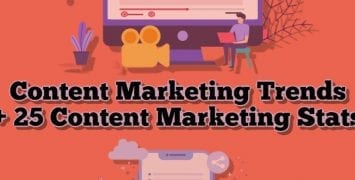Do you treat all of your customers equally?
All customers are equally important but you never want to treat all customers the same exact way.
Your customers can be divided into two groups: Those who have purchased from you before and those who are doing so for the first time.
Today I’m going to discuss first-time customers. As the saying goes, you never get a second chance to make a first impression. If someone has a fantastic, effortless, positive time purchasing from you, they’re instantly on the road to becoming a customer for life.
Here are my six tips to create a great first impression on a new customer:
1. Be Fast
This one is purely technical. You need your website to load fast – usually within about two to four second. You’ll also want a clean design which is easy to navigate. Avoid clutter, autoplays and any other distracting elements.
2. Give Something Away for Free
Here’s an interesting tidbit about human behavior:
An MIT study discovered that when something – anything – is given away for free, people perceive the item as having greater benefits than if they’d paid for the very same item.
Some common items you can offer include:
- eBook
- Podcast
- How-to Guide
- Course
- Infographic
In exchange, you’ll ask for an email address. This will be your content point to begin the Conversion Funnel, which is the process where you turn a prospective lead into a paying customer.
3. Following Good “Website Practices”
People are used to websites looking and acting in a certain general way. This called following proper “website practices.” Artistic design is great, but don’t try to re-invent the wheel.
People will form a fast impression of your website. If they can’t navigate your site in a glance, they’re likely to get discouraged.
Focus on the “above the fold” region. A stunning design, combined with clear navigation, will consistently win over new users.
4. Write for the Web
First time visitors to your site will have a lot of resistance. You want to overcome that resistance as soon as possible. This requires a certain type of writing.
Keep your sentences short, direct and info-heavy. Only use a few short paragraphs per page. This rule applies only to webpages, not blog posts which allow you to go more in-depth.
On your main webpage, stick to the one or two most important subject. This likely an introduction to who you are, what you do and why you’re the best choice.
5. Highlight the Important Stuff
Use block quotes, in a font larger than the rest of the content, to showcase the big ideas. This can be a pull quote from the page or simply a short summary.
People tend to scan content on the web. These large block quotes let readers quickly zero in on the info they’re searching for.
Use eye-catching headlines. At the same time, keep your subject matter clear.
6. Use the Power of Social Media
People don’t necessarily trust brands. But they do trust people who vouch for a brand. This applies even if they don’t know the people personally.
Feature real testimonials from satisfied customers. Place a variety around your website. Don’t go for just generic messages, either. Use specific testimonials related to common concerns about your products.
The idea here is to alleviate potential fears or hesitations potential customers may have by showing them real people who used to have similar concerns but now love your brand.
And a Bonus Tip!
Reach out personally to welcome each new customer. When a new customer makes a purchase, you want to know right away. I recommend including a personal note to the customer.
If you sell a product or service, include a handwritten note. If your product is virtual, sending an email is fine, too. You want to be as specific as possible in your message and reference the purchase directly. Then include a direct link for the customer to contact you later if they ever have a question or concern.
Reaching a New Customer requires different techniques than connecting with Existing Customers. The tips above are a great way to help turn a new customer into a lifelong brand enthusiast.




